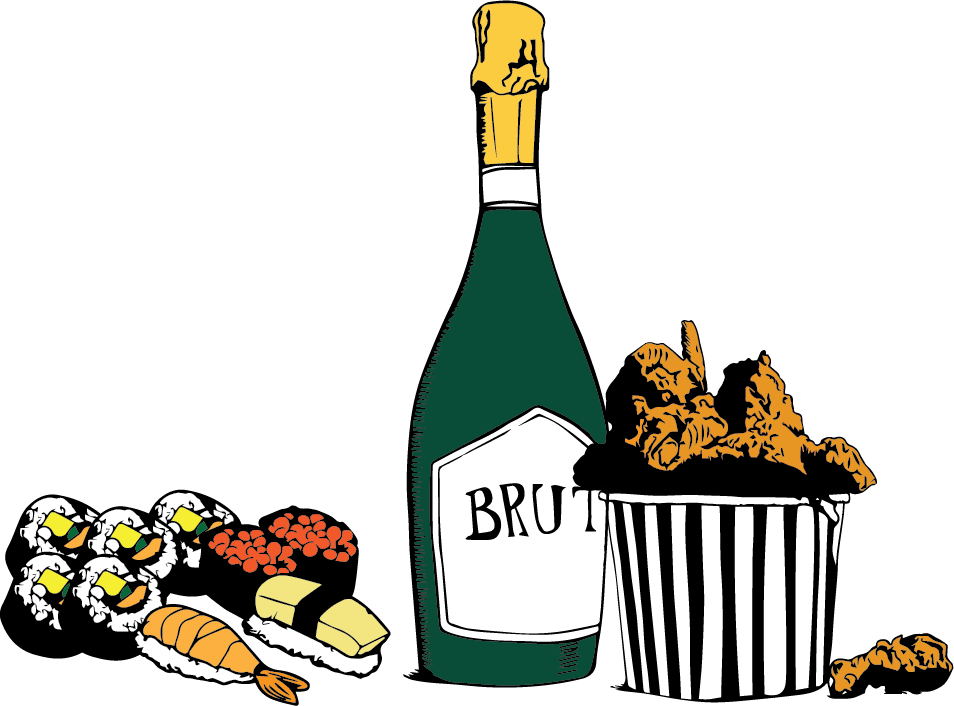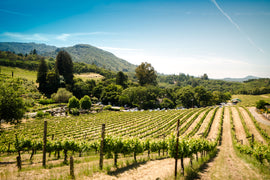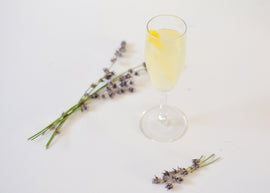Nowadays, we can all relate to the simple pleasure of Champagne effervescence that makes celebrations so joyful and animated, but the first bubbles in wine were an accident. The earliest Champagne was called the “devil’s wine,” as the bottles were prone to bursting. It took centuries of experimentation and failures to develop the techniques that can now be clearly defined by science.
The fundamentals of Champagne were first developed by the monk Dom Perignon in the 17th century, who produced wine from the vineyards at his abbey. He created a technique called assemblage (blending) while also perfecting the art of the clear blanc de noir. He was keen on developing a palatable product, and realized that blending different grapes and vintages could balance out sugar, acidity and flavor. Dom Perignon was also the first to resolve the issue of keeping bubbles in a bottle by introducing cork instead of wood to create an airtight enclosure. Around the turn of the 19th century, scientist Jean-Antoine Chaptal further defined the relationship between sugar and alcoholic fermentation. “Liquer de tirage” is a blend of sugar and yeast to start a safer and more predicable secondary fermentation to make still wine into mousseux, bubbly, wine. Then in 1818, Madame Clicquot, also known as the “Grande Dame of Champagne,” engineered the process of riddling, which allowed the sediment created from the secondary fermentation to be easily removed from a bottle. The process of riddling involves rotating champagne bottles in the cellar until the sediment is collected at the neck of the bottle, at which point the neck is frozen and the sediment is removed.
Early Champagne was especially popular with aristocrats and royals, but Champagne experienced rapid growth during the 19th century with the development of railways across Europe, expanding its availability. Along with the increased market came the taste variations that we know and love today.
The three main characteristics of any Champagne are style, aging, and sweetness. The three main styles of Champagne are blanc de blanc, blanc de noir or a combination of grapes usually called “cuvee”. Blanc de blanc is made with 100% chardonnay, and blanc de noir is made with 100% pinot noir and/or pinot munier. Cuvee means a blend of grapes. For aging, Champagne can be non-vintage or vintage. Non-vintage is the largest produced type of Champagne. It is made with a blend of grapes from multiple years and aged a minimum of 15 months. This approach allows producers to create a consistent product despite annual variations. Vintage Champagne is made with fruit from a single year that has aged a minimum of 3 years. In years with a particularly fantastic harvest, producers often focus on vintage Champagne.
"NV" vs. Vintage Champagne: Often times on Champagnes you see the letters "NV" which signifies that the particular champagne is a blend of grapes from different years. While these Champagnes are still top-notch, a Vintage Champagne represents less than 5% of all Champagne and is made from grapes that were all harvested in a single "perfect" growing year and aged for at least 3 years. These Champagnes are highly sought after for their deep and rich flavors, making for a Champagne that stands apart.
*We recommend: Cazanove Champagne 2007
Sweetness is the final characteristic of Champagne that dictates taste. After the secondary fermentation is completed and the Champagne is disgorged (sediment removed), producers top the bottle off with dosage, a mixture of sugar and wine. The final quantity of dosage defines the sweetness of the Champagne. Starting from least sweet (most dry), these levels are categorized as Extra Brut, Brut, Extra Dry, Sec, and Demi-Sec. The most common is Brut, which can have up to 12 grams of dosage added per liter.
Brut Nature– or "zero dosage" describes the very direst of Champagnes, with higher acidity and lower sugar levels. They are a mouthful, but every so refreshing.
*We recommend: Mignon Pinot Meunier cuvée paired with Fried Chicken (the high acidity in the Champagne is perfect for cutting the fat and oils of the southern classic, while providing a wonderful surprise for your mouth, full of flavor and complexity) #datenight
Extra Brut– the second level is a tad sweeter than the brut nature which has up to 6 grams of sugar added.
*We recommend: Francoise Bedel Champagne Origin'elle paired with Sushi (the slightly buttery texture of the Champagne compliments the raw and fattiness of the fish, with a subtle bite of acidity at the end to round out the mouth feels) #specialoccasion
For all we learn about the history, science, and variations of Champagne, the act of drinking it is what keeps us coming back for more. Whether you are popping a cork, pouring a glass, spraying a bottle in celebration, or simply being mesmerized by the nucleation (formation and floating) of bubbles in a flute, Champagne is both evocative and ephemeral, causing one to want to open a bottle again and again.





